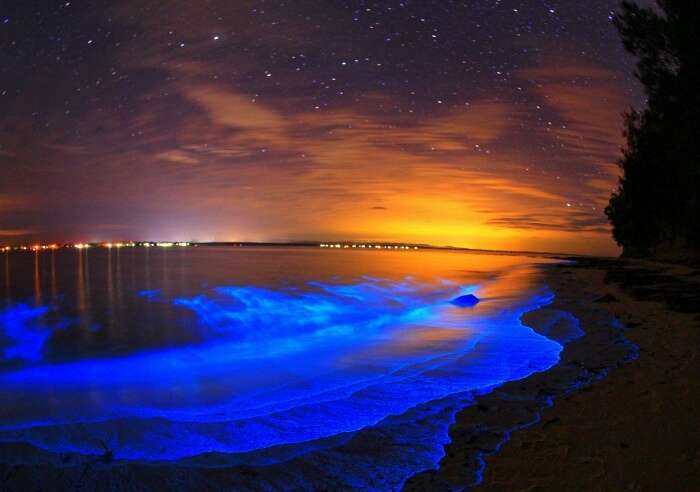The Illuminating World of Bioluminescence: Nature's Light Show

Introduction
Imagine a moonless night on a secluded beach, where the waves gently lap against the shore, and the only source of light comes from the star-studded sky. Suddenly, the water begins to glow with an otherworldly, ethereal light. This mesmerizing phenomenon is the result of bioluminescence, a natural wonder that has captivated scientists and nature enthusiasts alike for centuries. In this blog, we'll delve into the captivating world of bioluminescence, exploring what it is, where it can be found, and the remarkable creatures behind this stunning light show.
I. The Science Behind Bioluminescence
Bioluminescence is the production and emission of light by living organisms. It's a chemical reaction that occurs within specialized cells or organelles. This reaction involves three essential components:
- Luciferin: A light-emitting molecule.
- Luciferase: An enzyme that catalyzes the reaction between luciferin and oxygen.
- Oxygen: Essential for the chemical reaction to take place.
When these components combine, they produce light without generating heat, making bioluminescence an incredibly efficient process. The color of the light emitted varies depending on the specific chemical compounds involved, ranging from blue and green to red and even yellow.
II. Where Bioluminescence Thrives
Bioluminescence can be found in various environments around the world, both terrestrial and marine. Some of the most iconic displays of bioluminescence occur in the ocean, where countless organisms light up the depths. Here are a few examples:
-
Phytoplankton: Marine microorganisms like dinoflagellates and certain species of algae are known to produce bioluminescence. When disturbed by movement or waves, they emit a breathtaking blue glow, creating the famous "milky seas" phenomenon.
-
Jellyfish: Many species of jellyfish possess bioluminescent organs, often used for predation or as a defense mechanism. Their graceful, pulsating movements accompanied by flashes of light make them a mesmerizing sight.
-
Deep-Sea Creatures: Some of the most incredible bioluminescent displays happen in the deep sea, where creatures like anglerfish and hatchetfish use their bioluminescent lures to attract prey or mates in the pitch-black depths.
III. The Role of Bioluminescence in Nature
Bioluminescence serves a variety of functions in the natural world:
-
Predation: Many bioluminescent organisms use their light to attract prey. For example, the anglerfish's glowing lure mimics the appearance of a small, unsuspecting meal, luring in curious prey.
-
Communication: Some creatures use bioluminescence to communicate with potential mates or to deter predators. Fireflies, for instance, use flashes of light to signal their availability for mating.
-
Camouflage: Certain animals employ counterillumination, a form of bioluminescence where they emit light on their ventral side to match the ambient light from above. This helps them blend in with the ocean's surface when viewed from below, effectively hiding them from predators.
IV. Human Fascination with Bioluminescence
Bioluminescence has long captivated human imaginations. It has inspired countless myths and legends, from tales of mermaids to stories of ghostly ships. Today, bioluminescence continues to amaze and inspire us. Scientists study it for its potential applications in medicine, technology, and environmental monitoring.
Conclusion
Bioluminescence is a natural wonder that reminds us of the incredible diversity and beauty of life on Earth. Whether witnessed in a dark forest, a deep-sea trench, or a coastal beach, this living light show is a testament to the remarkable adaptations that have evolved in the natural world. As we continue to explore and understand the science behind bioluminescence, we are sure to uncover even more of its mysteries and potential benefits for humanity. So, the next time you find yourself on a moonless night by the ocean, keep an eye out for the enchanting glow of bioluminescence—it's a glimpse into the magic of our planet